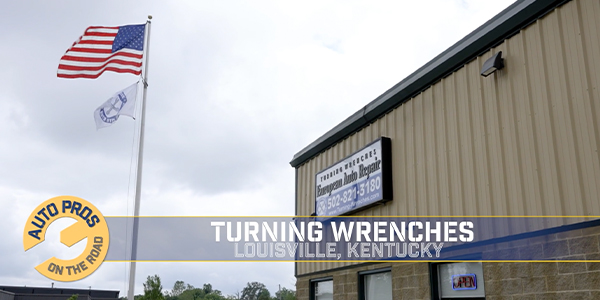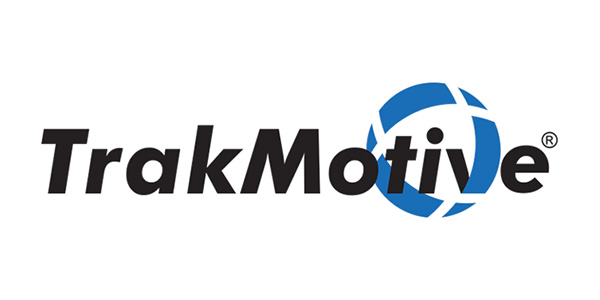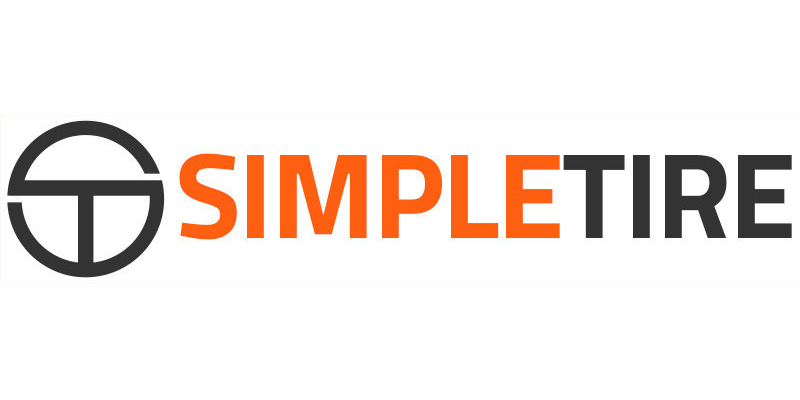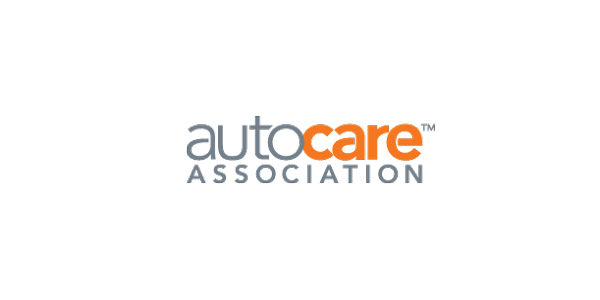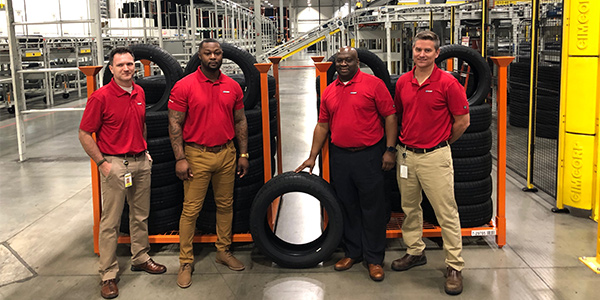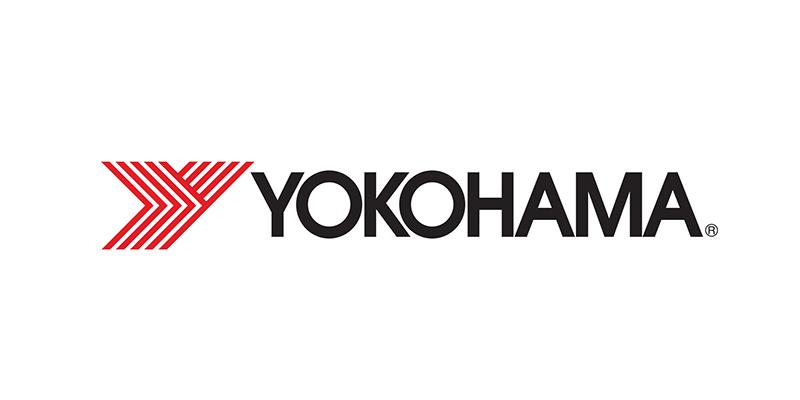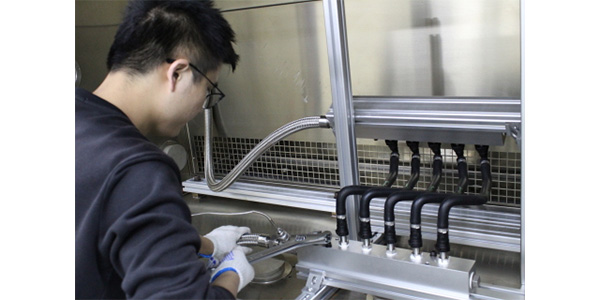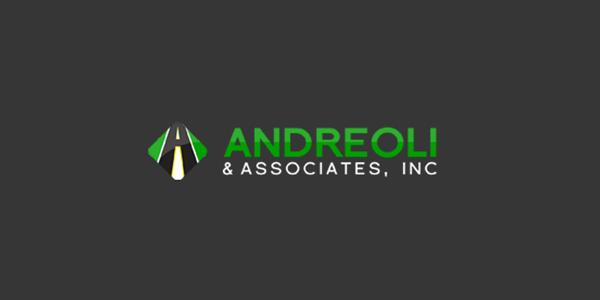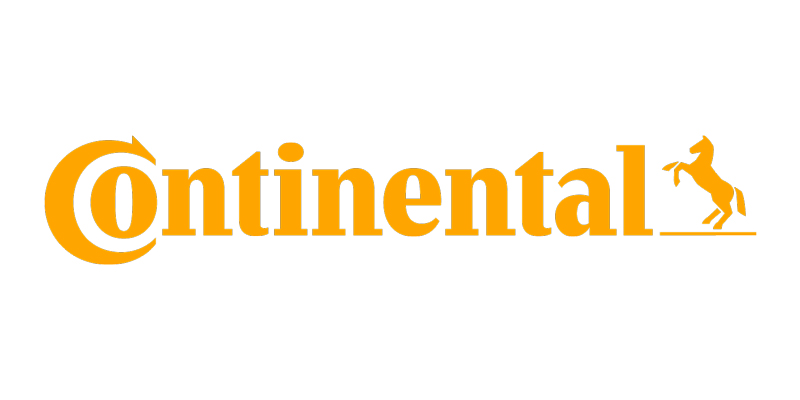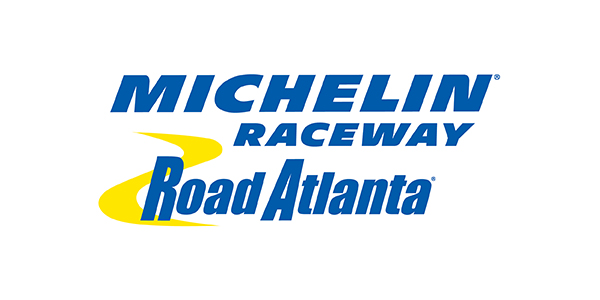 [Editor’s Note: During the recent TIA OTR Conference, held Feb. 19-21 in Marco Island, Fla., Wade Gatlin, vice president of mining tires for Bridgestone Americas’ OTR unit, gave the tire manufacturer keynote address “Value in a Changing World.” While his speech is directed to an OTR tire audience, a lot of what he offers is a consistent message that resonates across virtually every industry and customer type. Here is the text of that speech.]
[Editor’s Note: During the recent TIA OTR Conference, held Feb. 19-21 in Marco Island, Fla., Wade Gatlin, vice president of mining tires for Bridgestone Americas’ OTR unit, gave the tire manufacturer keynote address “Value in a Changing World.” While his speech is directed to an OTR tire audience, a lot of what he offers is a consistent message that resonates across virtually every industry and customer type. Here is the text of that speech.]
“We’re going to talk today about value in a changing world and the OTR tire industry. The OTR tire industry has gone through a tremendous amount of change over the last several years, as we all know in this room. The situations of our customers have changed, and we need to work together to consider how we’re going to meet the needs of the future.
Today, I want to talk about the off-the-road tire industry as it relates to the construction and the mining industries. First, I want to talk about where have our customers come from in the past, some of the challenges they have gone through, and how did we as an industry respond. Later I’ll talk about what’s going on with our mining and construction customers today. And most importantly, what customers will need to do to influence the future. I can assure you it looks a lot different going forward into the future.
First, what happened in the past? I think everybody in this room has been in the industry for 10, 20, 30 and some of you 40 years, and maybe one or two of you maybe even more than 40, so you already know the past, but I’m going to cover that real briefly.
The past was production. Production at any cost, period. From 1995 to 2005 the construction industry was on fire. Massive commercial and residential properties were being built. Projects that affected multiple industries and construction were being built, such as the Denver airport. Housing booms such as in Vegas, Phoenix, Los Angeles, Minneapolis, Orlando, and many others were going on. During this time the biggest issue in construction was finding labor, equipment and tires.
Mining also saw a large growth over the last 10 years. In many of these years, the mines saw 10%, 20% and even 30% growth in a year. The mines could not get the product out of the ground fast enough. Also during this time, China started acquiring massive amounts of coal, copper and iron. The urbanization of China started. The mining companies in the world were in a race to see who could get the ore out of the ground the fastest.
Because of these separate events, the OTR tires around the world were in very, very short supply. People were scouring the world for giant OTR tires, and the people in this room were either looking for tires, repairing tires, or retreading tires. Some of you, I even heard, were even digging up tires from scrap piles. Hopefully not from this room. Because of these events, OTR tires around the world were in short supply. Production was king, and not much else mattered.
Let’s start by talking about the mining business. Over the last few years our customers were doing what they needed to do to keep up. Companies were investing in new equipment to improve productivity, and as commodities in all sectors rose, the mines needed to get the ore out of the ground faster, no matter what the cost. During this time we went from large trucks to ultra-large trucks. Shortages in equipment, tires and labor were the challenges of the day. You could name your price if you could provide any of the products that were in great demand and in short supply. Those increases in equipment lead to an increased need for labor.
Mining customers were hiring as many people as they possibly could find. Some mines in Canada were even transporting people across the country on planes just to work in the mines. Cost for production rose exponentially during this time. However, this cost was ignored because the ore value continued to rise and the mines were making tremendous profits. Productivity in many instances was the only focus of the operation. Speed over cost, that was only way forward during this time. Customers were not always able to secure the products that they wanted or needed.
The shortages were significant and had the ability to halt production and hurt our customers. Even though the mining and construction customers were frustrated with lack of supply, there was no alternative.
Over a period of three to five years, operational cost at the mines during this time of growth caused some operations to have high cost increases, as high as 400%, and just let me give you an example. In 2006, I went to one of the North American gold mines. At the time they could get a ton of ore out of the ground at $340 a ton. They were also getting prices for gold at that time at $1,500 an ounce. They were making tremendous profits during that time.
This same gold mine last year, their cost of production to get a ton of ore out of the ground was over $1,100 a ton. Prices at that time last year were right at $1,200. You can see the dramatic changes just in the gold industry.
We saw a surge in acquisitions in mining and construction. Aggregate companies, construction companies and small mining companies were all preyed upon by the large, and the large got larger. In many cases these large companies paid far more for the properties than the transactional evaluation for these properties were worth, and that once again was because the ore prices continued to rise. The mines, which were growing, wanted to grow as fast as possible because cash was rolling in.
Similar to the mining industry, the construction industry went through a phase of massive spending for 10 plus years from 1995 to 2005. I can tell you that I actually lived through this boom and bust cycle. I moved to California in 1993 and as luck would have it, my wife and I bought a house. My house price immediately started to plummet in 1993. Three years later my house was worth half of what I paid for it. Luckily, four years later, the house price doubled, and I sold it at break-even.
The young couple I sold it to, the house price doubled again in three years. They sold it. The couple that bought it, the house price cut in half again. So, in Los Angeles those boom and bust cycles do happen. Housing starts and commercial investments were at an all-time high in 2005. Starting in 2005 through 2008 the bubble started to burst. The mortgage industry, the housing market and confidence in our banks were at an all-time low.
If you lived in Phoenix, some parts of California, Las Vegas, Orlando, and yes, Ft. Meyers or Minneapolis, you saw the value of your homes evaporate. Once that bubble burst, the total industry plummeted 32% from $13.8 trillion in 2007 to $9.4 trillion in 2011.
Since that point in 2007, construction has had a long, slow period of consolidations and lackluster growth until now. Companies have been forced to cut cost and focus on maintaining cash flow and watching expenses. Housing prices also peaked in 2005, and later began to decline in 2006. This also put more pressure on construction companies to be leaner and more efficient in the construction industry.
With all that was going on with the customers, tire dealers were faced with a whole different set of challenges, as you all know. Tire dealers were forced to be fast, efficient and operationally nimble. Everyone was trying to keep up with the market where demand far exceeded supply. Dealers were experts at finding the right products for most of their critical customers when they needed them to keep those customers up and running. The end-user customers really appreciated what the dealers in this room did to locate the product when they needed it. Product margins in many cases were high. Dealers were able to make good margins on most of the products that they sold. These were good times for most of the dealers in this room.
Now let’s go to the tire manufacturers. What happened for the tire manufacturers during this time? Tire manufacturers went through this period with a lot of challenges. Many tire companies did not fully meet the customer demand for the supply of products. Everything they produced was bought in a quick fashion. Tire allocation became a rule, not just an idea. There was no way to meet the rapid expansion of the construction industry, the mining industry and the massive growth of China and other rapidly expanding BRICS countries.
Raw material costs were skyrocketing and manufacturers needed to increase prices during this time. Many of these rates could not be passed on due to the long-term contracts that many of the manufacturers had with the mine customers. Manufacturers had never seen raw materials prices rise this fast, this quickly. Although multiple price increases did happen, raw material prices were rising faster than the manufacturers could pass on the increases.
It was a frustrating time for all. The dealers couldn’t get product, and the manufacturers couldn’t raise prices fast enough.
New second and third tier products entered the market that customers were forced to use in order to keep their customers up and running. Many of these new entrants had poor quality and low performance, but the customer had to have tires on the equipment that they had ordered. All of these changes in the customer’s business and how the tire industry, from both a dealer and the manufacturer’s perspective, have lead us to where we are today. Customers complained mightily to the manufacturers to increase their capacity. The manufacturers did listen, and plans on expansions to meet these needs were implemented and put into place. We’re all in this together as part of this industry, and this is part of our history.
I talked a lot about where we came from in this industry, which inevitably has lead us to where we are today. Today’s environment is much different than what we have seen in the past. Let’s think for a bit about the customers of today and how the tire business is changing.
As we know, the mining industry has changed dramatically the last 12 to 14 months. Profits in these companies have tumbled. Gold, coal, iron ore and many other commodity prices are down. The expansion in China has slowed, as well as many other countries. Eastern Appalachian coal companies have struggled mightily with higher costs, lower coal prices, and regulation and permitting issues with our government entities. A total of 151 coal mines were idle the first half of 2013, according to the mining safety and health records in the U.S.
Other commodities have all suffered. In 2013, gold prices were down 28%. Iron ore prices were down, as well as copper. This has been a tough 18 months for most of the mining industry.
As early as last week, one mine’s CEO was replaced. Fundamentally our customers in the mining industry have started to look for a different type of management team to lead them. A number of very high profile mining CEOs have been let go from their positions over the past 18 months. Many of these CEOs were true miners. They grew up in the mines. They knew how to get the product out of the ground very, very fast and very, very efficient. They were very good at the past model of production at all cost.
This isn’t the way of the future, however. The way for the future is cost control and performance. Mines are hiring financial experts, operational efficiency experts, professional negotiators and downsizing consultants, such as Proudfoot.
It’s a different mentality today than in the past. It used to be growth at all costs. Now they’re shrinking. This new management CEO is usually MBA-educated and is focused on expense control in a down market, and working smarter, spending money more wisely in an operationally efficient manner. The focus is not to get the ore out of the ground fast but to increase profits and shareholder value as they remove the ore.
Procurement offices, and I’m sure many of you have run into some new procurement people, have been increasingly involved in the business at individual mine sites. It used to be a corporate location. Now the procurement offices are actually starting up at individual mine sites. These new procurement personnel want to understand how a tire dealer and a manufacturer can work together in order to reduce their cost and increase their operational efficiency. More legal personnel are also being hired by the mines in order to set up and work with contract negotiations.
Today, we’re working with a whole new set of people from the mining industry that have not necessarily come from the mining industry or the tire industry, and they’re asking a totally different set of questions. A significant challenge that has increased over the last several years in our industry is increased regulatory efforts. OSHA continues to monitor and improve the safety of our construction customers and our dealerships. Safety compliance is no longer a choice; it is a mandate. CSA has also brought new tougher regulations for all construction companies and mine companies that have employees traveling over the highway system in the U.S. If you have a service truck with has a DOT number on it, you are under the CSA standards.
Perhaps no bigger area has seen greater regulation than the mining industry. MSHA has added many inspectors the past five years, so more frequent inspections are happening at the mines, as well as the mine contractors. MSHA has also radically changed how they do the inspections. They used to be a friendly inspection agency. They no longer are a friendly inspection agency. Citations have increased, as well as the fines that go with these citations. Because of the aggressive nature of MSHA, a number of new companies have sprung up to monitor the mine and mine contractor safety. If you have not heard these names, you soon will, even on an international standpoint.
The situation today in construction does look a little bit different than the mining industry. The industry as a whole is starting to be more optimistic about seeing light at the end of the tunnel for construction. Demand and supply of housing is starting to equalize. Oversupply of houses is currently being reduced to a more manageable level. Commercial building is supposed to increase significantly in 2014. Housing prices are rising in areas that declined years ago, such as Phoenix, Vegas, Los Angeles, Orlando, Ft. Meyers and Minneapolis. The future is starting to look brighter for the construction industry.
However, until this transition moves more into roads and bridges and commercial construction, OTR sales will not go back to the old levels. The last few years were extremely tough on the construction industry. A lot of businesses failed during this time and were unable to overcome the critical issues that faced them, and they just didn’t survive. Those customers that did survive, though, are strong. They were able to weather the storm for the past few years. They were very tough and very savvy and are great negotiators. They’re here to stay and will move into the future with more confidence from lessons learned in the last several years.
With the expected rise of construction in North America, it can be expected to bring new interest to the markets. Those large companies that got big, there’s not a lot of small ones out there, so we are expecting some smaller ones to come into the market. New interest may come from non-traditional owners that will have different ways of doing business. These new interests may be small but will compete heavily on price and also look to get their foot in the door on slim margins.
The last five years have seen a decline in government spending on major construction projects. The current administration has spent billions of dollars on bank bailouts and financial institutions but has not spent much on infrastructure improvements. We have many roads and bridges that need immediate improvements. Some projects in limited space have started to pick up, but as it stands now, predicting the rise in government-funded projects and how quickly this will turn is somewhat of a wildcard.
Hearing Tim Easter‘s forecast yesterday on government public works projects and electricity utility spending was also discouraging. Until Congress passes the roads and bridges bill on infrastructure, government spending will still be limited in construction.
From where we’ve been in the past to where we are today in the off-the-road tire industry, one thing is very certain – our customers changed. They will seek more from us in this room than they ever did in the past. Let’s take a look at a very short illustration and think about how our value proposition needs to look to these customers, moving forward.
So to summarize, we in this room need to look around us and tailor our value propositions to serve our customers, because those customers need some change.
What does the value proposition look like in today’s changing world? It looks a lot different. Total service and value is being demanded from customers in the new world. Which leads us to where we need to go today, our collective future. The future looks different and commands more of where we’ve been in the past. What does the future hold for us, and how are we going to show total value?
End-users that survive will be the most efficient and the best. It’s our job in this room to make sure that we help the customers thrive and survive in the future. Consolidation will continue in this new world. Local will become national. National will become global. This will continue in both construction and the mining industries, and this is not being driven by the manufacturers, it is being driven by the customers. You have to change with them or they will change you. You have to either become part of their success or someone else will take your place.
The customers are looking for more information on service and on how you can either help them to either reduce their operating costs or improve their efficiency. Are you up on the latest tools and technology, and can you provide this information and services on a global basis?
The questions of the day is, how do your customers see you? Does this current image represent your brand? Are your people professional looking, trained and efficient? How well trained are your people on MSHA, CSA and mining construction rules? Our customers today are already expecting higher standards today. The future will demand even more. Are you and your employees prepared?
Tim Easter said something about it yesterday. Basic tire services, mounting, dismounting, change-outs are entry-level services and will get you in the door sometimes. If you want to stay in, though, you have to provide more. The customer wants more than this. He wants the best in class. The customer, also, the ones that are going global, are comparing global services to your local services. He wants best in class and additional services that prove that you’re adding value to his or her business. It’s all about adding value and making customers more productive. You can do this by several ways. One is by the repair quality of your tires, quality of your new tires, retreads, wheels and rims, on-site service, intelligent tire tags or tire tracking, heat studies, weight studies, road studies, run-out information.
There’s a lot of different ways that you can add value for your customers. A great product with a great service and solution will give the customer more value than just product or service alone. What you used to do in the past will not be enough in the future. Does your service and solutions give our customers the added value that they’re looking for today? So, service plus solutions equal value.
Does your service technician or manufacturing representative add the value that represents your company’s brand and allows you to be best in class to the total service provider? Are you best-in-class in the eyes of the customer? Are you viewed as a supplier or a vendor, or are you viewed as a trusted advisor? Two totally different words.
Does your end-user look forward to you coming to visit them to help them solve a problem, or are you viewed as just another vendor who is taking up their time?
There are tremendous changes going on in the workforce today. Many baby boomers, and we have many boomers in this room, are getting close to retirement in both the mining and the construction industries. The newer generation is smart, they’re efficient, and they definitely require a different approach. There has to be a blend of acquired day-to-day knowledge and the newer tech-savvy knowledge.
The question is, are you training your older and new employees to be successful in this changing world? Are you mentoring your new employees with your older employees in order to get that key operational knowledge, and are you training your older employees in computers and tech presentations? Are your people changing the way of dealing with the customers, or are they doing the same things they’ve always done? Technology has changed the world we lived in. Are you running away from the technology change, or are you running toward it? Are you taking the lead in helping your workforce transfer to this new technology world?
Whether it’s an environmental issue, compliance issue or safety issue, we all have to change to meet newer, stricter standards, whether you’re a dealer, a manufacturer or service provider. You no longer have a choice to not comply. The customer is demanding that all service providers meet these standards. Both construction and mining companies want to know how you are changing the way you do business in an environmentally friendly way, and this is value-added in the new world. So if you have not done an environmental presentation to your customers, you need to rethink on how you go and present to your customers.
Are you meeting these standards? As far as service, what does your business offer? Are you the trusted consultant to the customer? They’re relying on you to better their business. Do you perform jobsite evaluations and look for opportunities to save them money, or are you just selling them a product? Do you offer training programs for their employees? Do you offer retreading, repairs, foam fill and other services to your customers that add value to the end-user and also to the products that you sell? Do you sell your customers superior products? How about a truly differentiated and superior service that only you have versus your competitors? So, what makes your dealership or your service different than the competitor’s when you call on your customers?
Our industry is rapidly changing. The question is, are you changing? It will not go back to the past. We all want it to go back to the past. It will not go back to the past. If you are investing in your people, growing with your customers, becoming best in class in services and solutions and offering services that your competitors do not, your chance of survival is very, very high. If you’re waiting for the past to come back, your chances are slim. The question is, where does your business fit in? The business world and the animal word are similar in one aspect. Those that adapt to the environment survive. Are you the chameleon or not?
We at Bridgestone want to be your partner in helping to get you to the future. We are continuing to invest heavily in future products, services and solutions that will help you exceed the needs of the customers. If you think it is painful today by yourself, imagine doing it tomorrow without your partner.
This is a great meeting but it’s a very, very short time for us to get together and look at our industry to discuss the industry. We heard great updates from industry experts on OTR and products, services, safety and training. We hear what’s going on back at our legislatures and what’s not going on back at our legislatures. But when you get back home, your challenge is to meet your customers’ needs. Your other job, your challenge is also to grow your business.
I urge you, when you get back to your business, to look at it differently. Does your dealership or business truly reflect what the customers want tomorrow, not today? The formula for success is simply to say but very difficult to implement. Superior products with superior service equals value to the customer.
And I know some of you think that this is only happening to you. You are not alone. This isn’t just about one manufacturer. This isn’t about one dealership. It’s not just happening to you. It’s happening to all of us.
The future does look different, and it can look bright for all of us if we accept the challenge. Dealers, manufacturers and customers, we don’t exist without each other, and we all have to make money. I challenge each of you and every one of you to build from the past, bring the best forward, and bring the most value for the customer. We are in this together.
Thank you for your time today, and if you’re a past, current or future customer at Bridgestone, thank you for your business.

